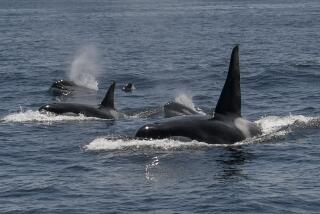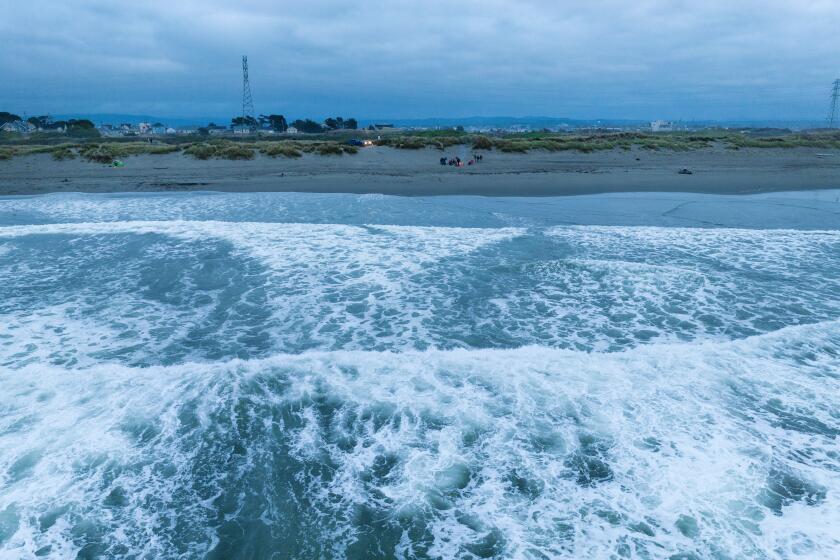Orcas have big brains to go with their brawn
- Share via
Reporting from Orlando, Fla. — Neuroscientist Lori Marino and a team of researchers explored the brain of a dead killer whale with an MRI and found an astounding potential for intelligence.
Killer whales, or orcas, have the second-biggest brains among ocean mammals, weighing as much as 15 pounds. It’s not clear whether orcas are as well-endowed with memory cells as humans, but scientists have found they are amazingly well-wired for sensing and analyzing their watery environment.
Scientists are trying to better understand how killer whales learn local dialects, teach one another specialized methods of hunting and pass on behaviors that can persist for generations -- longer, possibly, than in any other species except humans.
Researchers have yet to find evidence that an orca in the wild has killed a person. But they aren’t surprised that the world’s biggest, most powerful and possibly smartest predator, captured and kept for years in a tank and cut off from the influences of an extended family, could have an encounter fatal for a human.
Human interaction with captive killer whales has come under increased scrutiny since Feb. 24, when a large male orca with a checkered past killed a trainer at SeaWorld Orlando by dragging her into a tank.
“I’m not trying to second-guess what was in this particular whale’s mind,” said Marino, part of the Neuroscience and Behavioral Biology Program at Emory University in Atlanta. “But, certainly, if we are talking about whether killer whales have the wherewithal and the cognitive capacity to intentionally strike out at someone, or to be angry, or to really know what they are doing, I would have to say the answer is yes.”
At least three distinct orca populations swim the world’s oceans, and they are more widely distributed than any whale, dolphin or porpoise. Fish-eating orcas stay in one area, flesh-eaters wander more widely along coasts, and a third group roams the deep-blue waters.
The three groups have starkly different diets, languages, hunting techniques and manners of behaving around other marine life, and they don’t seem to interact much with one another.
“If they didn’t have the same paint jobs, you’d call them different species,” said Brad Hanson, a National Oceanic and Atmospheric Administration wildlife biologist in Seattle.
Yet the orcas’ DNA tells a different story. Instead of the varied populations having genetics that spread outward like a tree with several main branches, theirs is a single, nearly straight trunk, except for a mismatched pair of genes here and there.
If genetic variety isn’t what makes these killer whale groups so different, scientists suspect, their enormous brains might be the telltale factor.
Bigger animals typically have bigger masses of brain cells. But scientists use brain-weight-to-body-weight ratios as a rough measure of intelligence. By that measure, human brains, by comparison, are seven times the average. Orcas’ brains are 2 1/2 times the average, similar to those of chimpanzees.
But scientists think that looking at only the brain-body ratio seriously underestimates the thinking power of larger marine mammals. Orcas might be much smarter than the size of their brains already suggests.
Also remarkable to researchers is the orca’s ability to communicate with whistles and pulsed calls, and to “see” by making a clicking sound that works like sonar.
Many cetaceans -- whales, dolphins and porpoises included -- have these abilities to some degree. But orcas learn local and complex languages that are retained for many generations.
Their bio-sonar, or echolocation, abilities also amaze researchers.
A recent study by Whitlow Au of the University of Hawaii’s Marine Mammal Research Program added to evidence that orcas can use their bio-sonar not just to find fish in murky water but to identify their favorite meal: chinook salmon.






